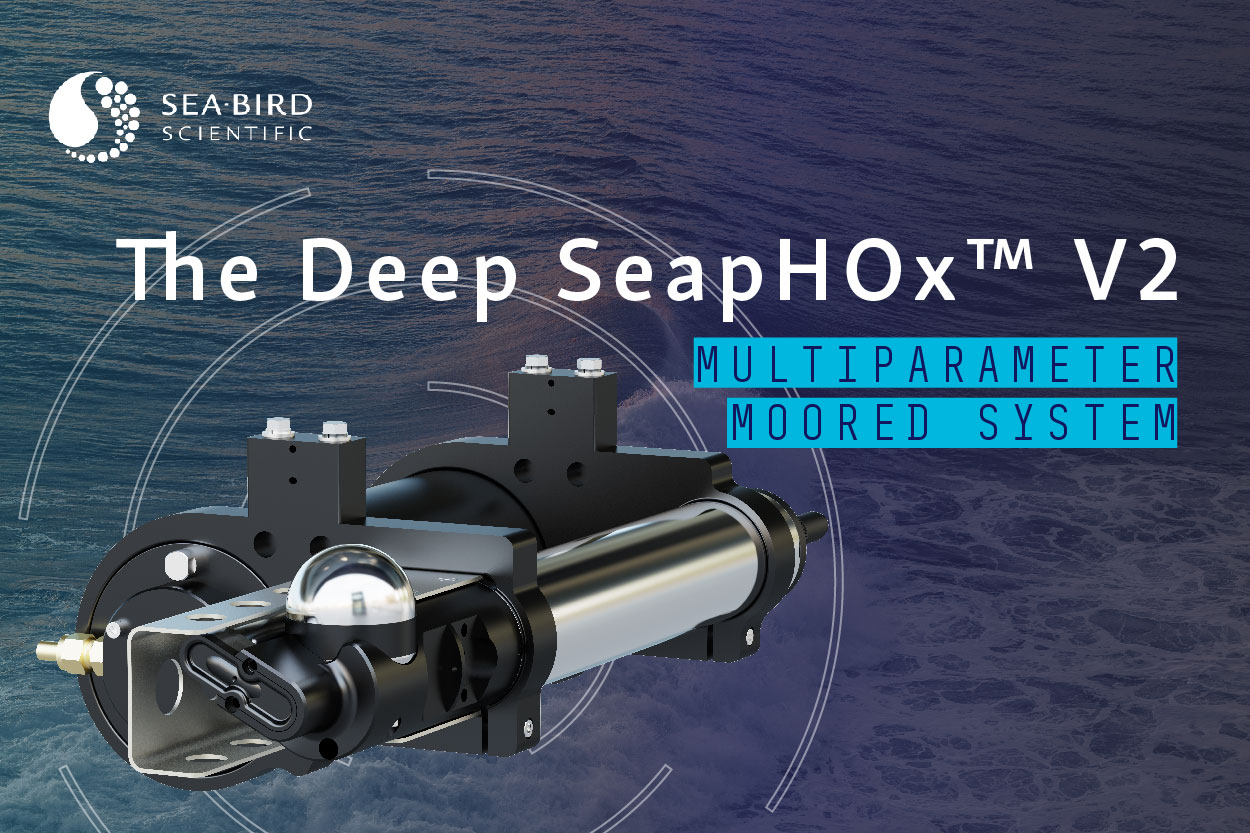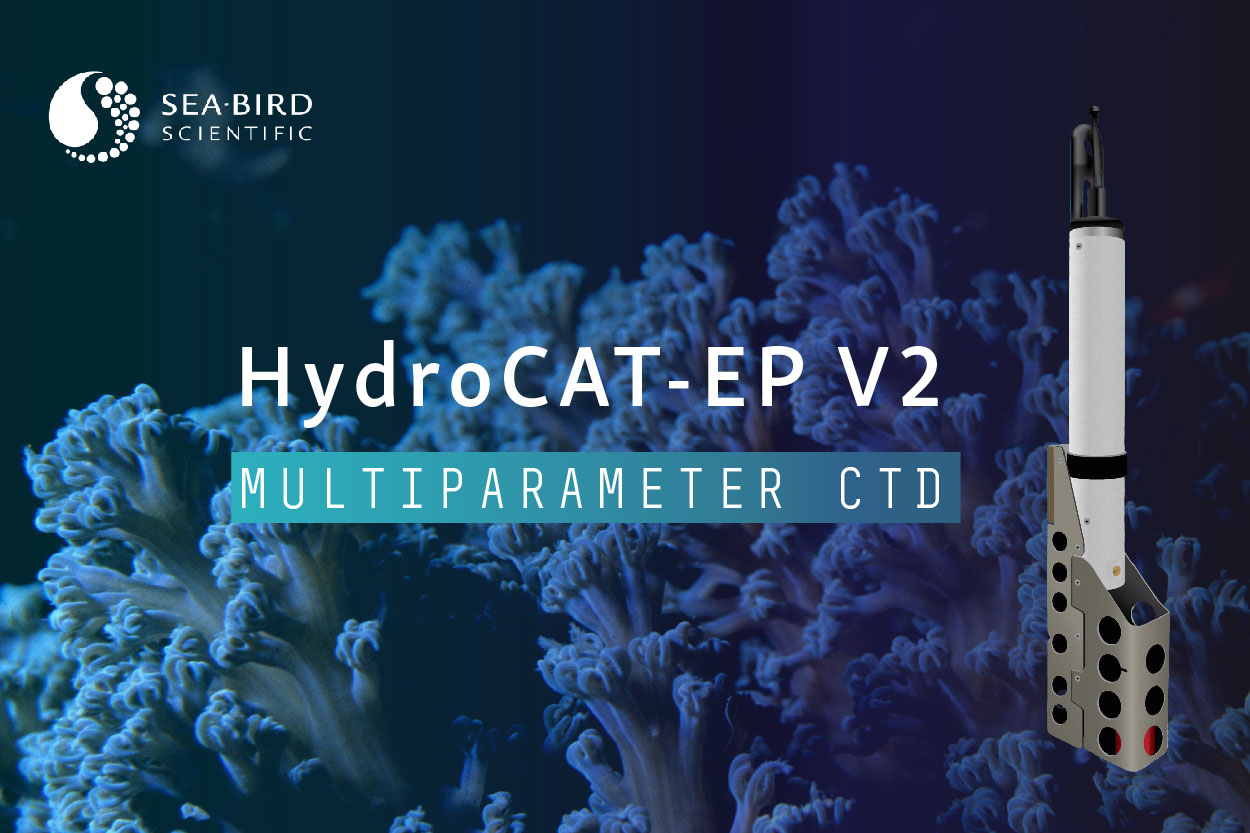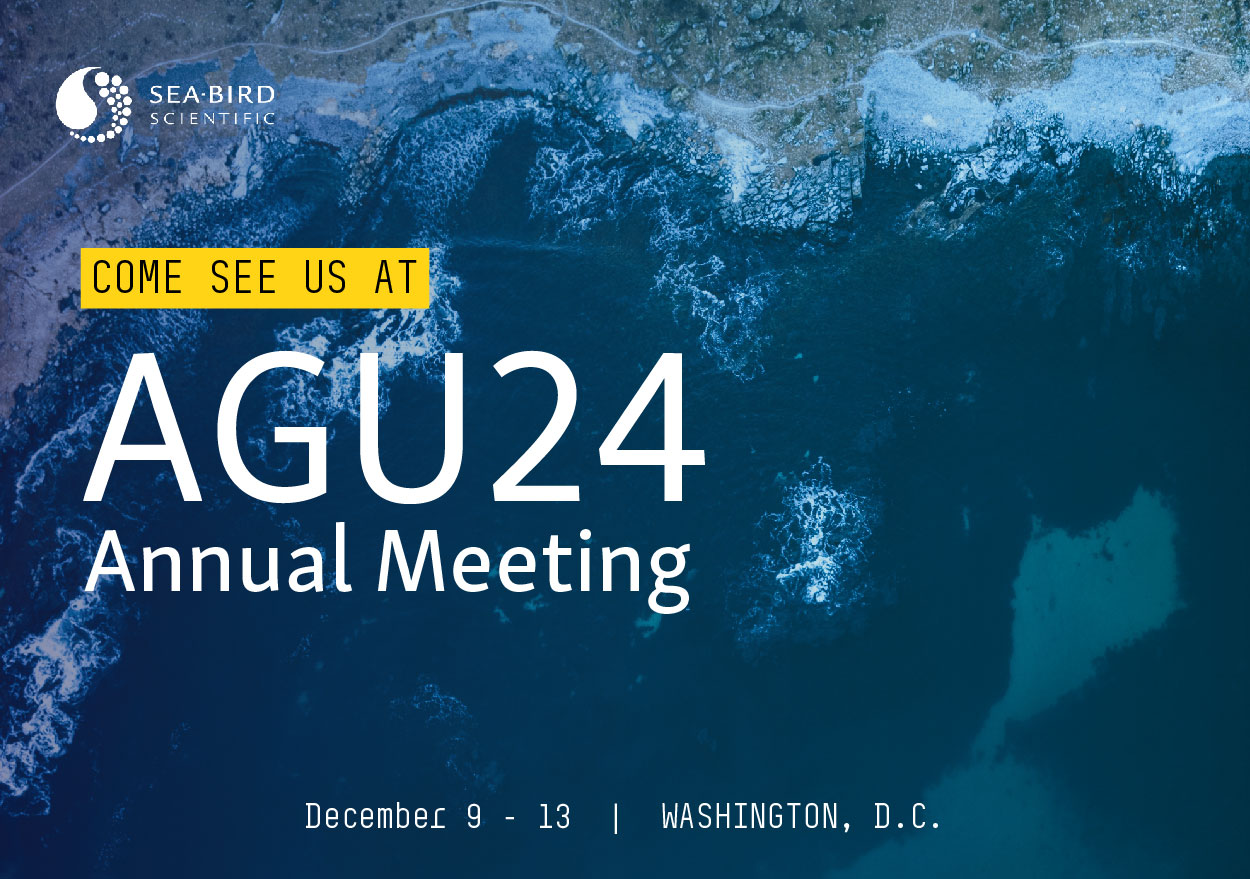International Women in Engineering Day – Sydney Clark
We are excited to celebrate International Women in Engineering Day on June 23. This day is meant to celebrate women in STEM, and provide an opportunity to highlight women in engineering fields, who are still very much under-represented. In fact, according to the Society of Women Engineers, only 9% of mechanical engineers are female.
We are excited to introduce Sydney Clark, Production Mechanical Engineer at Sea-Bird Scientific. Sydney started with Sea-Bird Scientific in January, and supports mechanical production needs such as improving product designs, tooling design, and manufacturing process improvements. Sydney comes to us from Michigan State University, having originally grown up in Michigan.
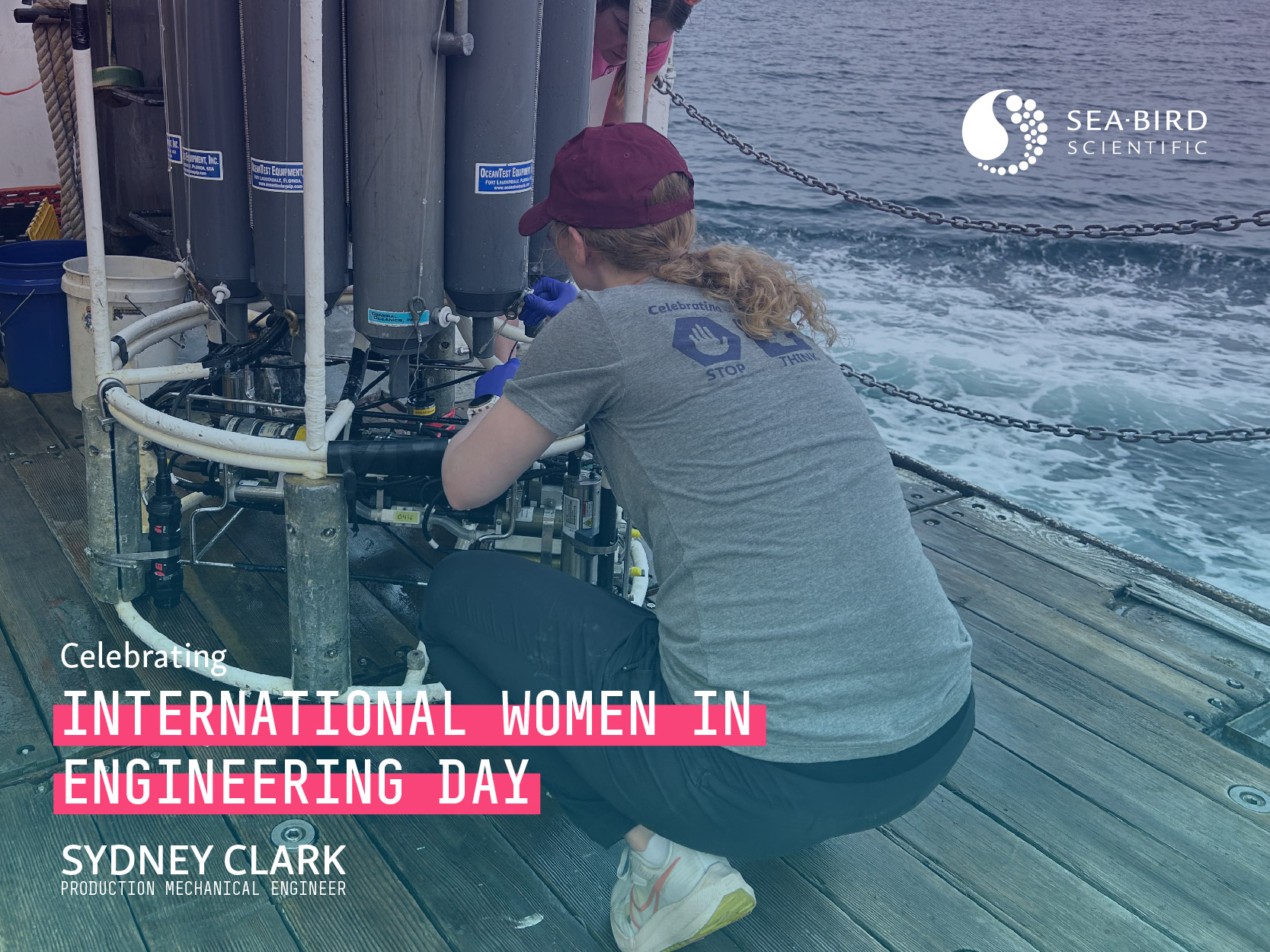
Due to our strong partnerships with research institutions, Sydney had the opportunity to head aboard an oceanography cruise with Texas A&M University late last month to see how students and researchers are utilizing our equipment in the field. The team started out in Gulfport, MS, and spent 5 days in the Gulf of Mexico aboard the R/V Point Sur, a ship owned by the University of Southern Mississippi. Sydney joined this cruise to gather field data on some of our optical instruments. Read Sydney’s digest of her time aboard the R/V Point Sur below:
Day 1 – Sunday May 28
I flew into Gulfport in the afternoon and met up with the Texas A&M team that evening. We unpacked the truck they drove from College Station into the ship. It was an amazing amount of equipment and so many glass vials all organized neatly into the ship’s lab. The ship left the dock at 12AM to head to our first station. We had 18 stations of depths from 200m to 3000m that we planned to stop at to collect samples.
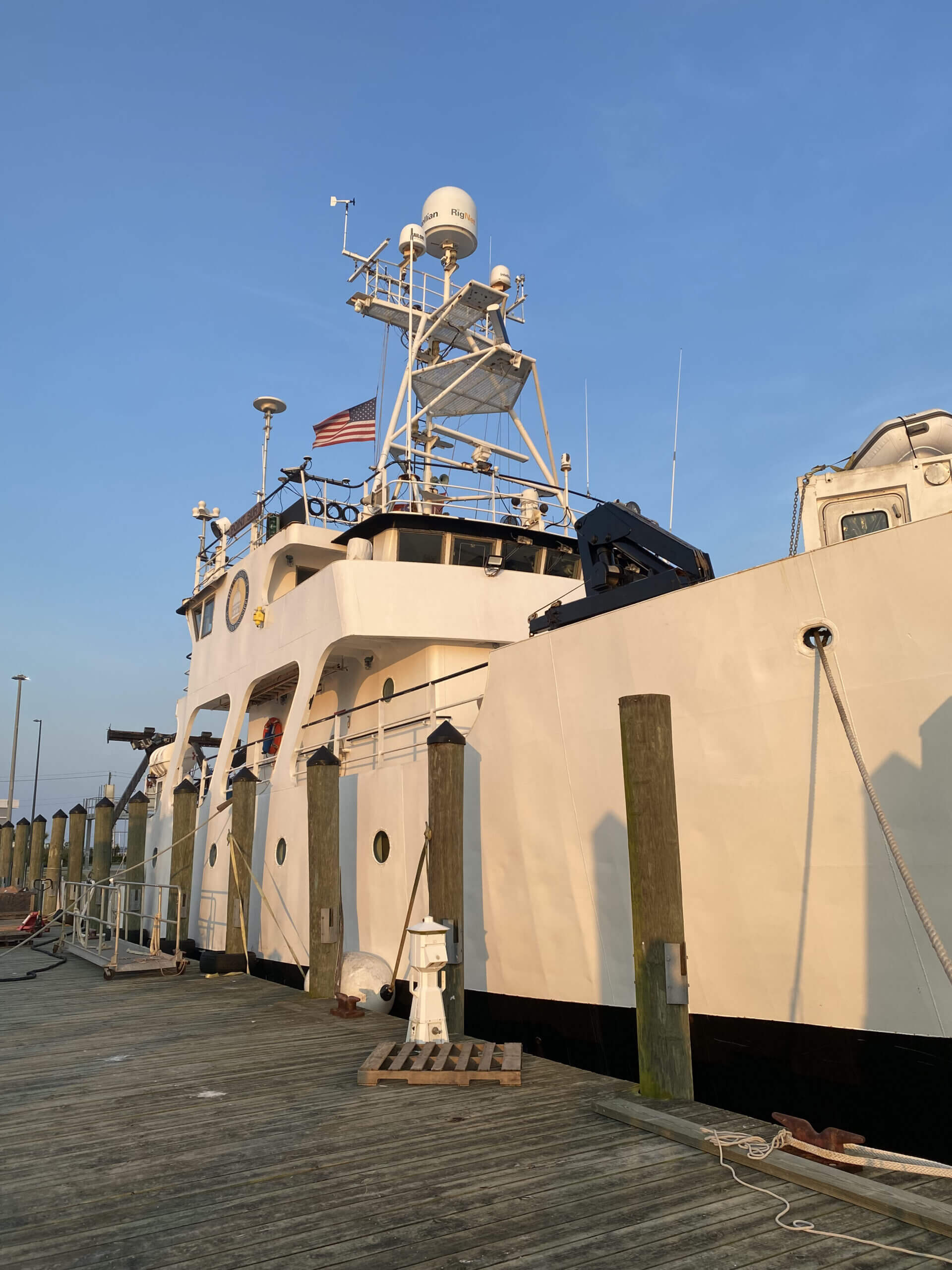
Day 2 – Monday May 29
We arrived at our first station around 11AM. As the students prepared and lowered the rosette to take the first samples, I was taught how to do my task for the week. I was collecting water samples for their CDOM data. I used a tube with an inline filter to collect water from each rosette bottle into clean vials which would then be stored in a chest freezer. Sample collection was more fast paced than I expected! As soon as the rosette was on deck, the ship took off for the next station and each student would start collecting samples bottles. This may take 30mins to an hour to get through each set of data for each sampled depth. After the first station, there was time for me to attach the optical sensors to the rosette. I connected each sensor to my laptop to reset the memory, set the internal clock, and start data collection. Then I attached each sensor to a post on the rosette that was an inch or so off the face of the ship deck. We stopped for a moment before the next station to collect sargassum, a seaweed-like plant floating in huge patches in the ocean. These were also great spots to fish! We did a couple more stations that day until my shift ended at 12AM. Each student was assigned a shift, I had the day shift of 12PM-12AM. At midnight, the 12AM-12PM shift would start, and the same set of data was collected for the stations we reached during the night.
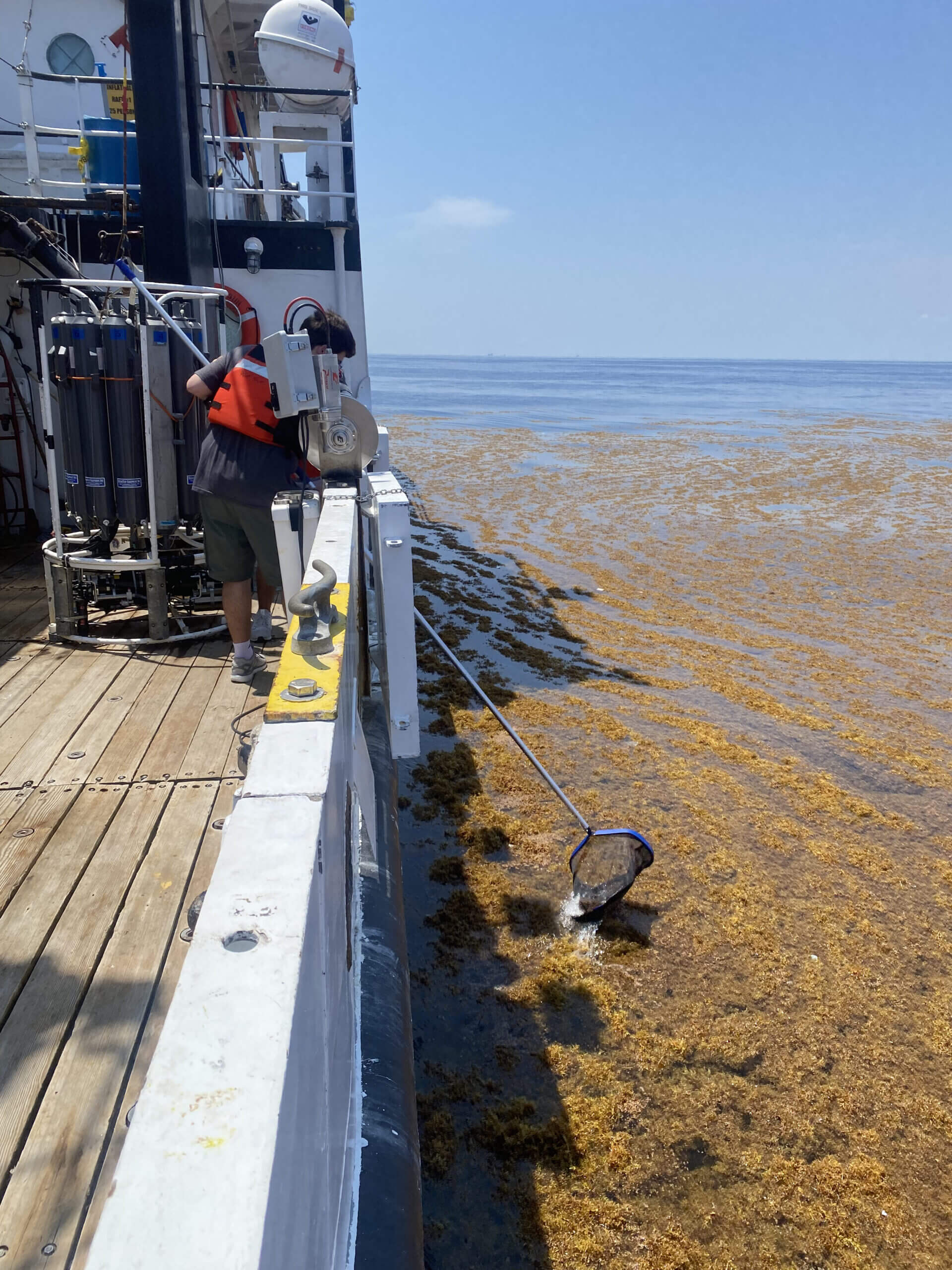
Day 3 – Tuesday, May 30
Today went as normal for the first half of the day until around midday, just before I was starting my shift. We were doing a deep cast down to 2000m for the first time and had a complication with the winch system. After the rosette was pulled up from the cast, the winch cable snapped, and the rosette dropped into the ocean. Luckily no one was hurt, but we did lose the whole carousel including the 3 optical sensors. Not wanting to give up on the cruise so soon, the crew decided to sail 12 hours back to dock to assemble another rosette and CTD to continue data collection.
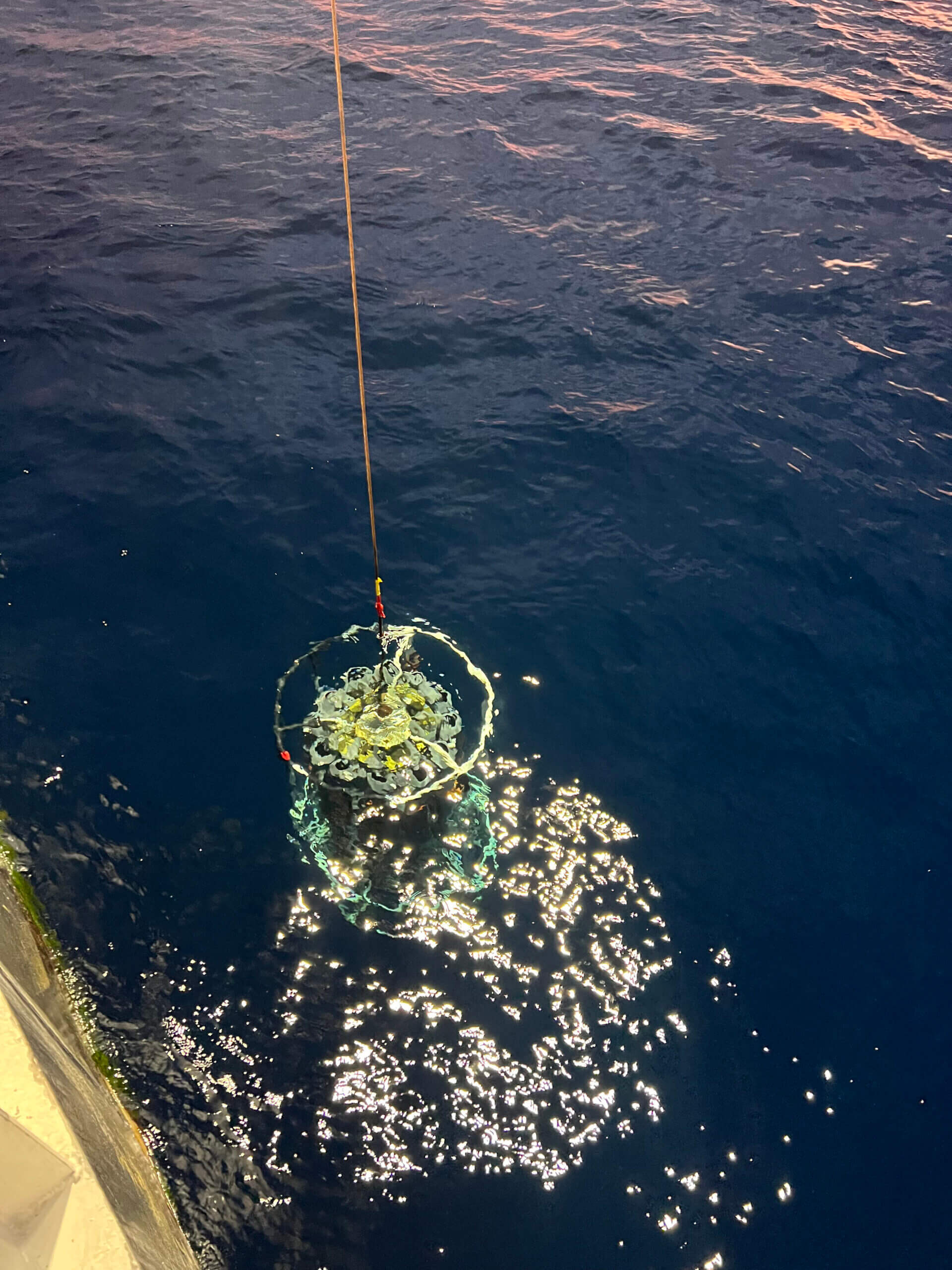
Day 4 – Wednesday, May 31
We arrived at dock at 1AM and picked up the components then immediately set off for the next station, another 13 hours away. In the meantime, the amazing marine tech running off very little sleep at this point, assembled the rosette and CTD during the transit time to the next station. I had one sensor that I hadn’t put on the first rosette that I was hoping to put on this one. At the next station, the CTD started having communication issues as soon as it entered the water. It took a few hours of troubleshooting before we unplugged every auxiliary sensor and solely ran the CTD, which held communication. We planned to test plugging in each sensor one by one to determine where an electrical short might be that was shutting down the unit each time it was put under water. We finished this station and set off for the next one. In the meantime, a storm was rolling in. Prior to this, we had extremely calm waters with barely any waves. In a few hours, the waves climbed 5-7 feet until we were officially in a tropical depression. We did one more station that night before taking a break to see if the waves would calm down. It was a little dangerous to be trying to sample bottles on the deck of the ship with those rough waters.
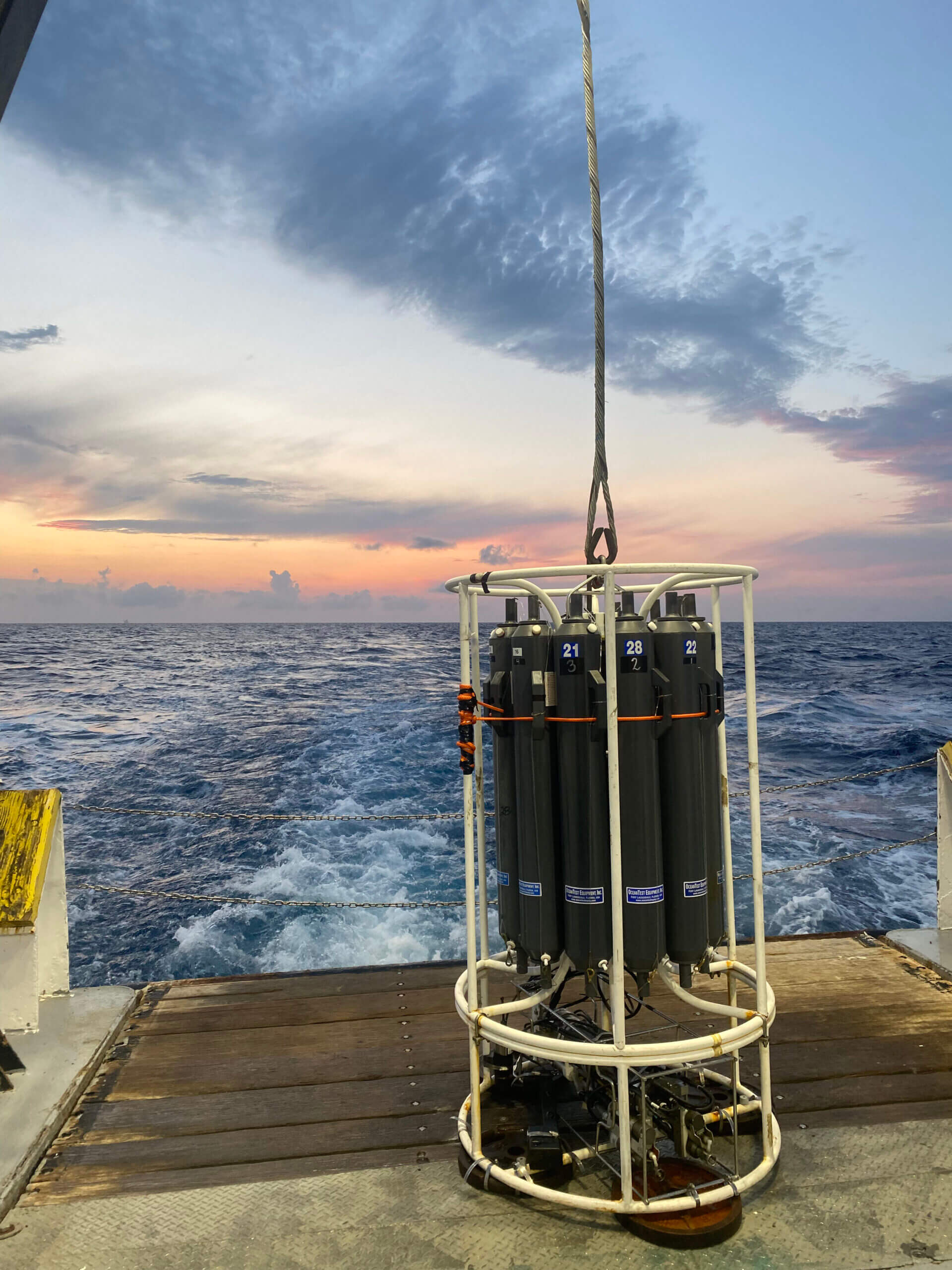
Day 5 – Thursday, June 1
Today, the crew decided to call the cruise a day early due to the storm. The waves were incredible, but definitely not ideal working conditions to say the least. We sailed another 14 hours back to port and arrived around 1AM that night. We unloaded the whole ship and then returned to get some sleep. The next morning, we finished some last-minute packing and said our goodbyes to the R/V Point Sur!
It may not have been the most productive research cruise, and it is never a good time to lose equipment, but I was able to experience of broad spectrum of the environment our sensors are used in. I loved learning about all the different paths of oceanography each student was taking and being able to see what they do!
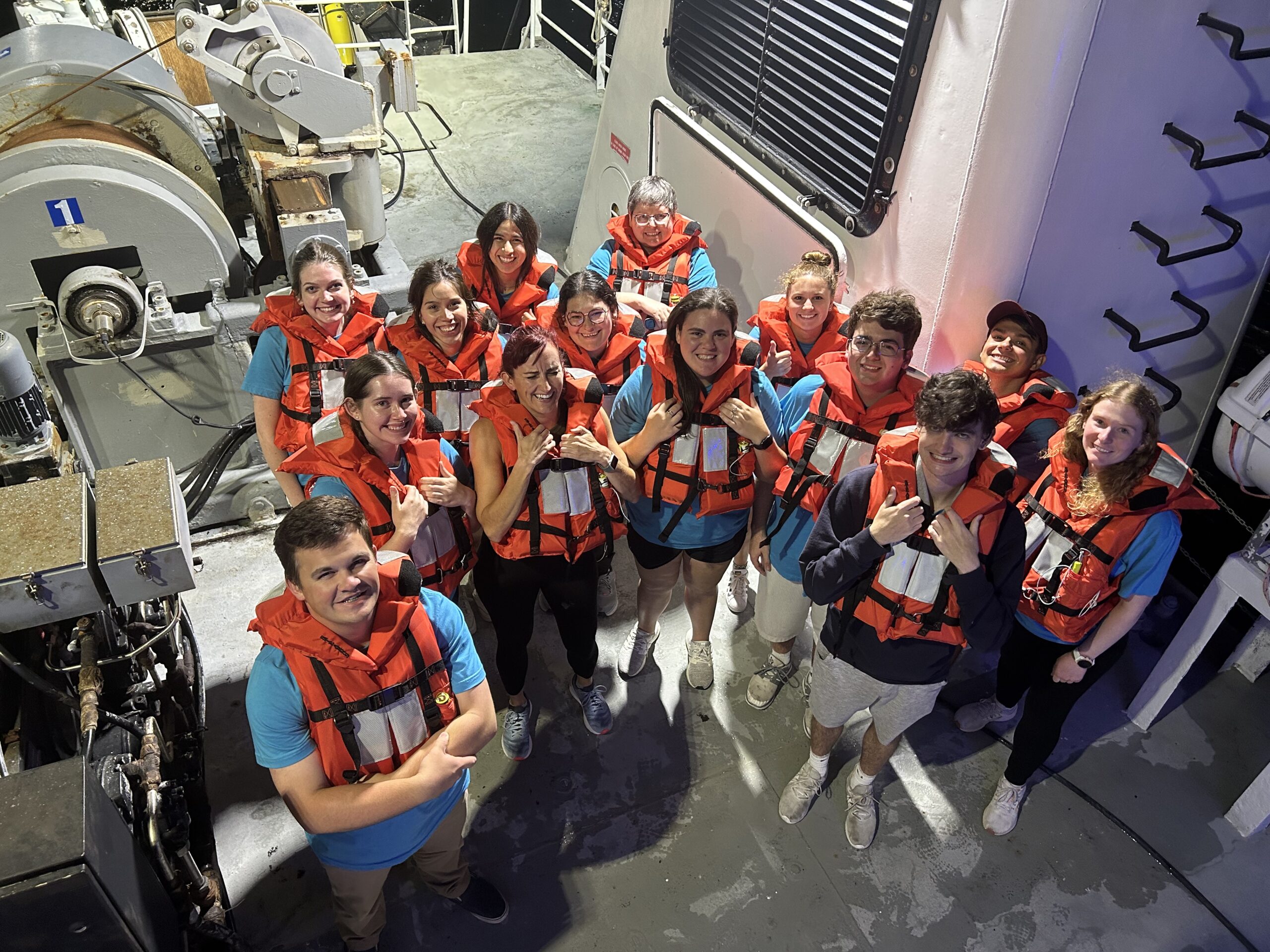
We also took some time to ask Sydney about her perspective on the importance of Women in Engineering:
Why are cruises like this important for ocean science?
Cruises like this are important because it is where our data is collected! There were so many different types of data from multiple labs in the university whose research depended on data collected on this cruise. It was great to see from the Sea-Bird perspective because I could see the environments our products are used in the field.
Why did you pursue a career in engineering? Who or what inspired you?
I honestly wasn’t sure what I wanted to do, but I’m the youngest in my family of mechanical engineers and it looked like a safe enough route. I knew I wanted a career where I was always learning and working with others, and this was it! My inspiration definitely came from my dad who has always loved his work. I like to say that if I leave a friend with him for a quick conversation, they will come back to me wanting to change their major to engineering. He has a way of describing the simplest of components like little works of art that used to make me roll my eyes, but now I catch myself doing it too.
What’s your favorite thing about a career in engineering?
I’ve always loved projects. I tend to take up hobbies just to see if I can do it. Engineering will fill that drive every week. I also love the collaborative aspect of it. I’ve gotten to know so many incredibly smart and kind people that I get to problem solve with all day.
Why do you think it’s important for women to get involved in engineering fields?
As with all fields, having diverse perspectives is so important to making inclusive, effective solutions to problems. Also, engineering is a great stable field that promotes a lot of independence. I think it’s important for women to feel welcome in this space and have access to the lifestyle that a career in engineering can provide.
What’s one thing you’d tell a woman who is interested in starting a career in engineering?
It can be hard to be one of a few, if any, women in a room. Women are receiving engineering degrees only to leave the field within five years or so. Many of the studies attribute it to loneliness and not feeling accepted into a male-dominated field and culture, and I’ve felt it a lot too. I’d say to find a company and team that makes you feel welcome, and that they do exist! It may take a little time to find it, but if you don’t right away, it’s okay. It doesn’t mean you don’t belong in engineering; you just have a little more searching to do. The more women we have that make accomplishments in this field while being their authentic selves, the easier it might be for the next woman to feel like she belongs and stay a little longer or even a full career.
Related Posts
Featured Posts
Oceanology International 2024
We hope to see you at #Oi24 We are excited to return to Oceanology International 2024 again in London, UK from March 12-14. Overview Oceanology International brings together 500+ exhibitors in the only event that links the three key players in the industry:...
Ocean Sciences Meeting 2024
We hope to see you at #OSM24 We are excited to return to Ocean Sciences Meeting 2024 in New Orleans, Louisiana from February 18-23 at booth number #527. Overview The Ocean Sciences Meeting 2024 is co-sponsored by the American Geophysical Union, the Association for the...
Pride 2023
Celebrating and honoring our LGBTQIA+ communities At Sea-Bird Scientific, we are proud to stand with members of the LGBTQIA+ community during Pride Month 2023. As with last year, we changed our logo on social media to feature a rainbow throughout the month of June in...
Science and Technology
Platform
